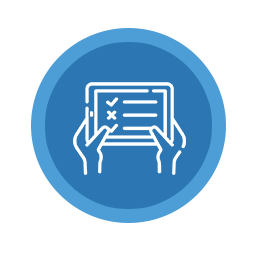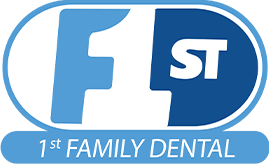For adults, trauma to the face may result in an injury as slight as a small chipping of tooth enamel, to one as severe as completely knocking a tooth out of it’s socket.
At 1st Family Dental, we always have walk-in or call-ahead appointments available for individuals who are experiencing a true dental emergency. Our existing patients can also take advantage of our 24-hour on-call service to speak directly with a dentist and receive information and advice regarding a dental emergency.
IMPORTANT NOTE: If the trauma to your head or face and it is accompanied by bleeding from the nose or ears, loss of memory or consciousness, dizziness, disorientation, severe head or earache, or if your teeth do not fit together properly after the incident, please seek emergency medical attention immediately. These symptoms are a sign of potentially severe injury to the face, neck and brain, and will require the immediate attention of a medical professional. In addition to emergency room physicians, many hospitals have an Oral and Maxillofacial Surgeon on staff to help diagnose and treat dental, mouth, and face-related injuries that accompany head trauma.
Absent any potential head, neck or spine injuries, the following issues are considered true dental emergencies, and will require immediate attention by a dentist:
Broken Tooth
More than just a chip, a tooth is broken when you can see white, dark and red components of the tooth. You may expect to experience moderate to severe pain. If left untreated, broken teeth can result in severe pain, infection, swelling, and a potential medical emergency. Seek emergency dental treatment as soon as possible, but no later than 24 hours. Maintain a liquid or soft diet, and try to keep food and other substances away from the affected area. Follow your dentist’s recommendations for pain management, which may include anti-inflammatories or prescription painkillers until your appointment.
Loose, Displaced or Concussed Tooth
If you sustained a concussion (hit) to your mouth or tooth/teeth, the tooth may have been knocked loose, crooked, or may have sustained damage to the root that you cannot see. You may experience mild to severe pain or tenderness, and some bleeding. In some cases, your tooth may have been pushed into the surrounding jaw, which requires immediate dental emergency treatment within a few hours. Left untreated, any of these issues can result in severe pain, infection, swelling, and a medical emergency. In any of these cases, you should contact 1st Family Dental and seek emergency dental care immediately. Maintain a soft diet, avoid chewing and try to keep food and other substances away from the affected area. Follow your dentist’s recommendations for pain management, which may include anti-inflammatories or prescription painkillers until your appointment.
Tooth Avulsion (Knocked Out Tooth)
If your tooth or teeth have been knocked out completely, there still may be a chance to save your original tooth. Stop any bleeding with consistent pressure. If you are unable to stop the bleeding within 30 minutes using constant and firm pressure, or if you have a bleeding disorder, you may need to seek emergency medical attention. Carefully pick up the tooth by the crown and rinse it gently with saliva, milk or saline. DO NOT touch, rub or scrub the root of the tooth. Place the tooth in a container with the fluid you used to rinse it. Make sure you do not shake or otherwise cause further trauma to the tooth during transport. Seek emergency dental treatment ASAP, ideally within one hour. You may experience moderate to severe pain and swelling. Leaving a knocked out tooth untreated will result in the permanent loss of the tooth, as well as potential severe pain, swelling, infection and medical emergency.
Each case is different, but your dentist may attempt reimplantation of the tooth and provide you with information, instructions and what to expect. Your dentist will also want to see you with follow up visits to monitor the status of the tooth and ensure it is healing, or provide alternative treatment if necessary.



